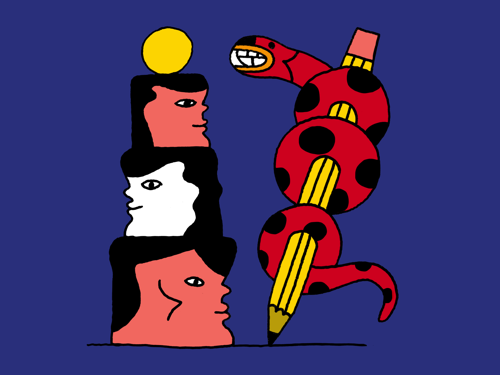Start With WHY by Simon Sinek
Jun 12, 2019
6 mins


Discover our series of HR MustReads. Our goal is to help those who make up the workforce of organisations keep their minds open to the best of what’s written on their craft. HR is such a large subject that our MustReads include a wide variety of inspiring books about organisations, management, recruitment, employment, and even anthropology, sociology and psychology!
And because every series must have an episode 1, we thought we’d start with WHY… Discover our abstract of Simon Sinek’s Start With WHY (2011) to learn how to inspire others to create value in a purposeful company.
Start with WHY
Simon Sinek created a movement to inspire people to do the things that inspire them. He became world-famous after a TED talk in which he explored how leaders can inspire cooperation, trust and change. Everything must start with WHY. The question WHY is a very powerful question. For people and organisations alike, knowing WHY helps to be inspiring, creative, productive and happier.
“Great leaders are able to inspire people to act. Those who are able to inspire give people a sense of purpose or belonging that has little to do with any external incentive or benefit to be gained. Those who truly lead are able to create a following of people who act not because they were swayed, but because they were inspired.”
Our decisions are the result of a dialogue between our head and our guts. On a daily basis, our brain analyses vast amounts of data to provide ammunition to rationalise our decisions. But more often than not, these don’t seem to be rational. That’s because they don’t need to appear rational when they fit the WHY…
Manipulation is not inspiration
There are two ways to influence human behaviour: manipulation and inspiration. In a world that doesn’t start with WHY, there is nothing but manipulation: it’s either carrot or stick. The carrot and stick approach aims to induce behaviour through a combination of rewards and punishment.
In business and in politics there are many known forms of manipulation: fear (“If you don’t use my product, you could get sick”), peer pressure (“90% of the experts in your field use product X”), discounts (“two boxes for the price of one”), gifts (“free toy inside”), aspirational messages (“Lose 10 pounds in 3 weeks”), novelty (“try our new formula with vitamin D”), etc. But these manipulations do not prompt loyalty. You will only buy a discounted product because it is the rational thing to do, not because you’re loyal to the brand. Depending on the manipulations, you will switch brands repeatedly.
Carrot and stick works. But not long term. You can’t establish a long-term relationship with someone you manipulate. Also the manipulated will tend to become addicted to the manipulations. If you’re used to buying discounted products, you won’t be able to accept the fair price anymore.
So drop manipulation and try inspiration instead!
The Golden Circle
To inspire and be inspired, you must rely on a well-balanced “Golden Circle”. Sinek’s Golden Circle offers a valuable insight into why some leaders and organisations have managed to become exceptionally influential. It shows how they are able to inspire rather than manipulate. A well-balanced Golden Circle must start from the inside out. From WHY, to HOW, to WHAT, and not the other way around. The Golden Circle is Simon Sinek’s number one concept, which he now uses in every conference, talk or book.
- WHAT: usually, WHAT is the easy question. Your WHAT is the product or service your organisation sells. In a way it is the result of everything. It can easily be identified and measured.
- HOW: HOW is slightly less obvious than WHAT, but a lot of companies do know HOW they do WHAT they do. The HOW can bea company’s ‘’differentiating value proposition’’, i.e. what makes it better than the competition. It’s everything that makes the WHAT possible. But something is still missing…
- WHY: very few companies know WHY they do WHAT they do. It is hard to visualise and phrase the ultimate purpose of one’s actions. Yet, that’s where everything should start.
The Golden Circle helps put these three concepts in the right order. Every action and message should start with WHY and end with WHAT. Marketing is flawed when it starts with a product’s specificities. Consumers and citizens don’t buy WHAT you do, they buy WHY you do it.
Produce meaning to create value
Throughout the book, Apple is mentioned many times as the best example of a company that starts with WHY (one could wonder if that’s still the case today, but that’s another question). “Everything we do, we do because we believe we should always question the status quo. We think different.” Apple’s WHY has long been the empowerment of individuals. Apple’s customers are so loyal to the brand that it was often referred to as a “cult”. It’s because Apple’s customers believe in Apple’s WHY that they are willing to accept to pay a higher price, wait in long tines, and become the brand’s most enthusiastic ambassadors.
For Sinek, the Golden Circle is even anchored in our biology. Our need for belonging is so strong we would do anything to satisfy it, even irrational things. We will buy the brands who we feel satisfy that need without asking questions.
For a company (or brand) to be authentic, the Golden Circle must remain clear and be executed with discipline over time. “Everything you do or say must prove your WHY.” And it must stay consistent over time.
Trust is the cornerstone of everything
Without trust, there can be no exploration, no experimentation, no progress of any sort. To accomplish great things, large organisations have to generate trust. That’s also how a strong culture can be created that will spread and solidify the company’s purpose over time. When they feel protected by their company and have a sense of belonging, employees will pass on these good vibes to the company’s customers.
It may seem somewhat counterintuitive but if you want to improve customer service, you should always start with your employees! Sinek writes at length about Southwest Airlines, which, in the early 1970s, managed to create a trust-inducing work environment: employees who are treated well treat the customers well. Southwest Airlines’ legendary CEO Herb Kelleher believed employees should come first, before the shareholders and the customers!
“Employees come first. If employees are well treated they will treat the customers right. The customers will buy the product. And the shareholder will be happy too.”
The WHY needs the HOW
In 1991, Geoffrey A. Moore published Crossing the Chasm, a best-seller that’s become a marketing mustread in which he offered a precious classification of consumers (this classification has since then been detailed and perfected by Malcolm Gladwell in The Tipping Point).
According to Moore and Gladwell, the population is divided into 5 groups: innovators (those who create and inspire) represent 2.5% of the global population, “early adopters” (the first fans of a product or a cause who become its most active ambassadors) represent 13.5%, the “early majority” (they aren’t the first but they do like new things) amounts to 34%, the “late majority” (they only buy the product because everybody else already has it) also 34%, finally “Laggards” (those who will only buy a smartphone because they can’t find anything else in the shop) represent 16%.
Sinek believes you can’t be successful at anything if you don’t focus first on your early adopters. They are your most loyal customers and enthusiastic activists without whom no movement can ever be created. If you first aim for the large majority in the middle with bland products designed to satisfy everyone, you will fail because you won’t have the active support of a passionate group. You can’t please everyone, and if you try to, you end up pleasing no one.
Your most active supporters provide the HOW. Innovators offer the WHY. But they would be powerless without the HOW.
Over time, the WHY is often under threat
Many companies, brands and leaders have lost their WHY over the years. Often the biggest challenge is to keep the clarity of the WHY intact, despite success. Indeed success is a challenge: when you become successful, you reach a point when you need to define objective metrics to continue to grow. That’s when you are at risk of focusing only on what can be measured and lose track of what really matters (WHY).
It happened to many companies who lost their founders. Apple lost its WHY when Steve Jobs left in 1985 (and probably again after his death in 2011). Walmart lost its WHY when its founder Sam Walton died in 1992, etc.
Never confuse measurable success with actual success! Sometimes you do reach all of your objectives (it can be measured) but you feel like a fraud. Or worse, sometimes you are all the more unhappy as you “succeed”. It happens each time your WHAT, your HOW and your WHY are no longer aligned.
HR people of all people can’t afford to lose sight of their company’s WHY. They are its valiant keepers.

More inspiration: Laetitia Vitaud
Future of work author and speaker

Age does matter, at work and in the White House
What we've learned from the 2024 presidential elections about aging at work.
Sep 09, 2024

Can companies avoid a brain drain as retirements surge?
Bye bye, Baby Boomers. Hello, knowledge exodus?
Jun 12, 2024

Workplace anxiety: Navigating the future of work in an anxious world
Anxiety has taken center stage in our modern world. How is it shaping the future of work? And most of all, what can we do about it?
May 20, 2024

Why recruiters should hire more ex-freelancers
While freelance and salaried work can seem worlds apart, they may have more in common than you think.
May 02, 2024

How women over 50 are reinventing their careers and the future of work
Women in their 20s struggle to be taken seriously, while middle-aged women battle discrimination... So how are women over 50 reinventing the wheel?
Apr 02, 2024
Inside the jungle: The HR newsletter
Studies, events, expert analysis, and solutions—every two weeks in your inbox

